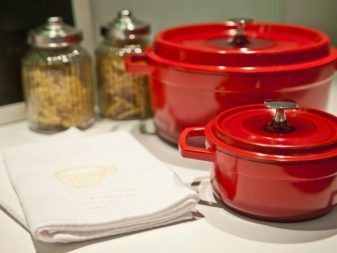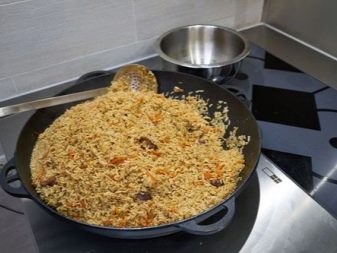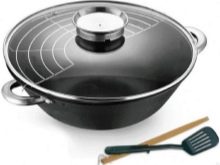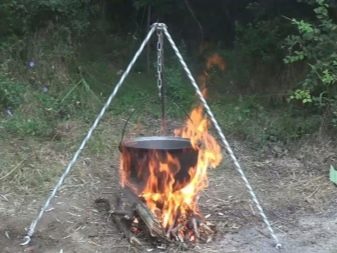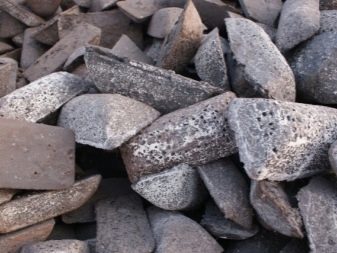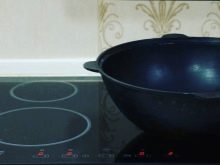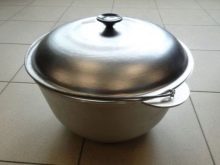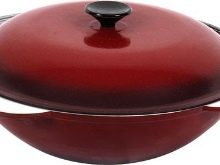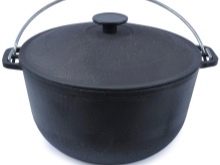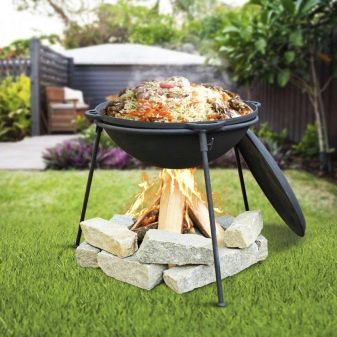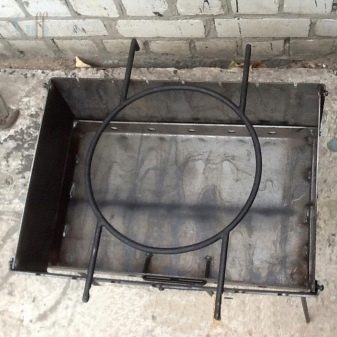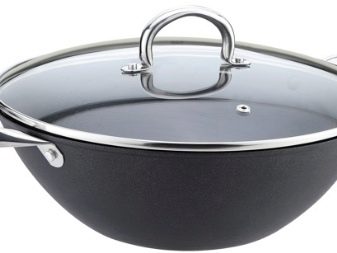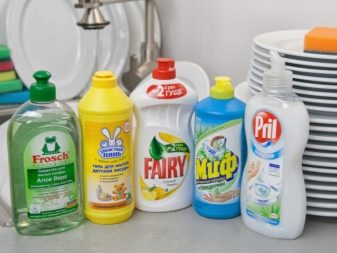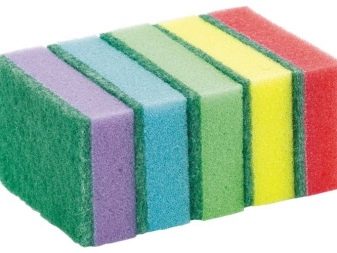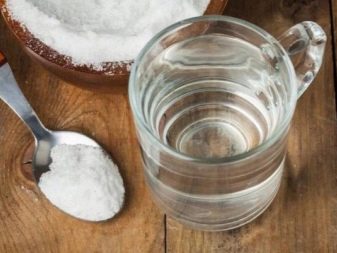Cauldrons for induction cooker: description, types, selection and operation
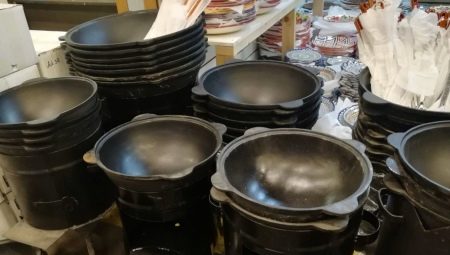
Induction stove has a lot of advantages, but one drawback is that it requires certain dishes. The principle of operation of induction consists in heating not the plate itself, but the dishes: the burner contacts the bottom of the cookware and is heated. therefore only dishes that have a certain mark are suitable for induction - a spiral or zigzag with the inscription "induction". Cauldron for induction can be traditional cast iron or steel. These materials have the necessary high resistivity and magnetic permeability.
The taste of the dish cooked on such a stove is no different from the food that was cooked on the fire. In addition, induction allows you to save time when cooking and set a timer.
Features
For the dishes to fit perfectly to the induction cooker, it must have a completely flat bottom. Otherwise, the plate will not work, since the contact will not be established. Therefore, when choosing a cauldron for induction, pay attention to the material and to the bottom of the dish. Traditional cauldrons with a convex bottom, unfortunately, will not work. In this dish you can cook over an open fire or in a stove.
We now turn to the features of the materials themselves.
- Cast iron at first use should be pre-ignited with a small amount of ordinary vegetable oil. It will create a protective film on the inner surface of the cauldron, which will not allow food to burn.
- After washing, the cast iron should be wiped dry, as water droplets can cause rust on the dishes, and it will be spoiled.
- "Utyatnitsa" can be made entirely of cast iron or have an enamel coating on the outside.
- Steel options are also suitable for induction, but can burn. To avoid this, you should adjust the degree of heating of the stove and constantly stir the food when cooking.
- When choosing dishes made of steel or aluminum, pay attention to the thickness of the bottom and walls - it must be at least 1 cm.
Varieties
It is no secret that real delicious pilaf is cooked only in a certain dish — a good cauldron. Its shape is usually round or oval, slightly widening towards the top. The cauldron should have a thick bottom and walls, and the cover can be lightened.
For home use suitable option with a flat bottom. This can be used on any stove, including induction. Of course, if the cauldron is made of the correct material. Kettle with a convex bottom are used on fires in limbo.
The best material for the cauldron is real cast iron. It is suitable for fire, and gas, and induction. In such a cauldron, pilaf is authentic in taste and appearance. The food does not burn, but slowly languishes.
Cast iron for cauldron can be ordinary or with enamel on the outside. Such dishes are incredibly durable, will last more than a dozen years with proper care, does not harm health. Essential minus is a big weight of a pig-iron kettle.
Another type of "Utyatnitsy" - dishes made of steel or aluminum. This option is also suitable for induction, it is easier by weight, it is easy and simple to take care of it. These materials do not require pre-filament. But the food in such a cauldron can strongly burn.
In addition, the steel can not withstand high temperature, rust and has a low life.
Thus, the best option is still considered to be made of cast iron. This material has more advantages than others.
Manufacturers Overview
Cauldrons intended for home use, are available in many collections of tableware brands. The best quality options are as follows.
- Kukmara - Russian brand, producing not only cauldrons, but also pots and pans. Cauldrons of this brand are considered among the best. They are made of aluminum alloy, have a thick bottom and walls. In the series - both small cauldrons (with a volume of 3.5 liters) and large ones (up to 100 liters). The inside of the cauldrons is treated with a special coating that allows you not to burn food. However, it is possible to interfere with products only with wooden objects, the metal may scratch the coating, and the dishes will become unusable.
- Cauldrons of the Ukrainian brand "Seaton" Made of coated cast iron. Comes with a brush for applying oil (to heat the dishes before first use). You can choose a small option for 3 liters or a huge 12 liters. Food cooked in such dishes does not burn, does not lose its beneficial properties. Leftovers from food are not recommended to be stored in cast-iron cauldrons so that it does not rust.
- Mayer & Boch. Cauldrons of this brand have a traditional round shape and are made of cast iron. The inner part is treated with non-stick coating. Comes with a glass or cast iron lid. The weight of a small variant is up to 8 kg. Such dishes can be used on any stove.
- Brand of professional cooking equipment "Techno-TT" offers induction cauldrons intended for restaurants and cafes. The boiler is built into the induction, complete with a lid. Volume - from 12 to 50 liters. The cauldron itself is made of cast iron, the plate is made of stainless steel. Such equipment will allow you to cook traditional oriental dishes with a unique taste.
- Cauldrons "Biol" have the form of a camping kettle and the convenient handle arch. For their manufacture used cast iron without non-stick coating. The walls of the cauldron are treated with engine oil, so before the first cooking it should be a long and thoroughly calcined. In this pot you can cook both on the fire and on any stove, including induction. Low cost is another nice plus.
The cost of dishes depends on the brand and the material from which they are made. Coated cast iron will cost from 3 to 10 thousand rubles for a “uatnytsya” of 3-7 liters. Aluminum cauldrons are cheaper, but the quality is lower than that of cast iron.
How to choose?
The classic cauldron has a hemispherical shape - from above wider, gradually tapering to the bottom. The bottom of a good cauldron for home use on the stove is sloping and flat. There are also cauldrons with a hemispherical bottom. They are used for cooking on an open fire using special coasters.
When choosing a cauldron, you should first focus on the material from which it is made., then on the form and additional qualities. Included with the cauldron should always be a suitable cover. It should fit snugly to the pot, have no gaps, so that the food inside the cauldron is cooked evenly, without any “drafts”.
Thick bottom and walls - an important factor. Such dishes will warm up evenly, keep warm longer, and products will slowly and correctly languish inside.
Another factor when choosing a pot is its volume. For a small family of 3-4 people it will be enough to have a cauldron at 3-3.5 liters.
If you plan to cook food in a cauldron for a big company, then it is better to choose a bigger option - 8-12 liters.
After selecting the desired model of a cast iron cauldron, carefully inspect it for the presence of chips or rust. They should not be. The inside of the dish should be completely flat, without bald spots. Outside the cauldron can be covered with enamel or ceramics - this option looks beautiful in any kitchen.
How to care?
Cauldron from real cast iron need to carefully prepare for the first use:
- first, the dishes should be well washed with detergent and a brush, dry with a towel;
- then you should put the cauldron on the stove and calcine it for about two hours on medium high heat, then add a kilogram of salt and calcine for some time (the salt will turn gray, it means that all the factory oil is out and the dishes are cleaned);
- after which you need to pour about half a liter of vegetable oil inwards and calcine, changing the position of the dishes so that all the walls are in the oil film, it takes about half an hour;
- oil should be poured out, and the pot should be wiped carefully with a soft cloth and cooled, now the dishes are ready for use.
It is easy to wash the container after cooking - use a regular sponge and dishwashing detergent, you can use baking soda. Make sure that there is no food or water left in the dish after washing, otherwise it may cause rust. In addition, store ready food in a cauldron is also undesirable.
If you notice the appearance of any stains inside the dishes, you can boil the water with soda and carefully clean it with a brush.
Then rinse well with water and dry with a towel. Periodically (once every few years), you can ignite dishes with oil for prevention.
Proper and careful care of the cauldron will delight loved ones unusually delicious dishes for more than a dozen years.
How to conduct a cauldron test for an induction cooker, see below.
